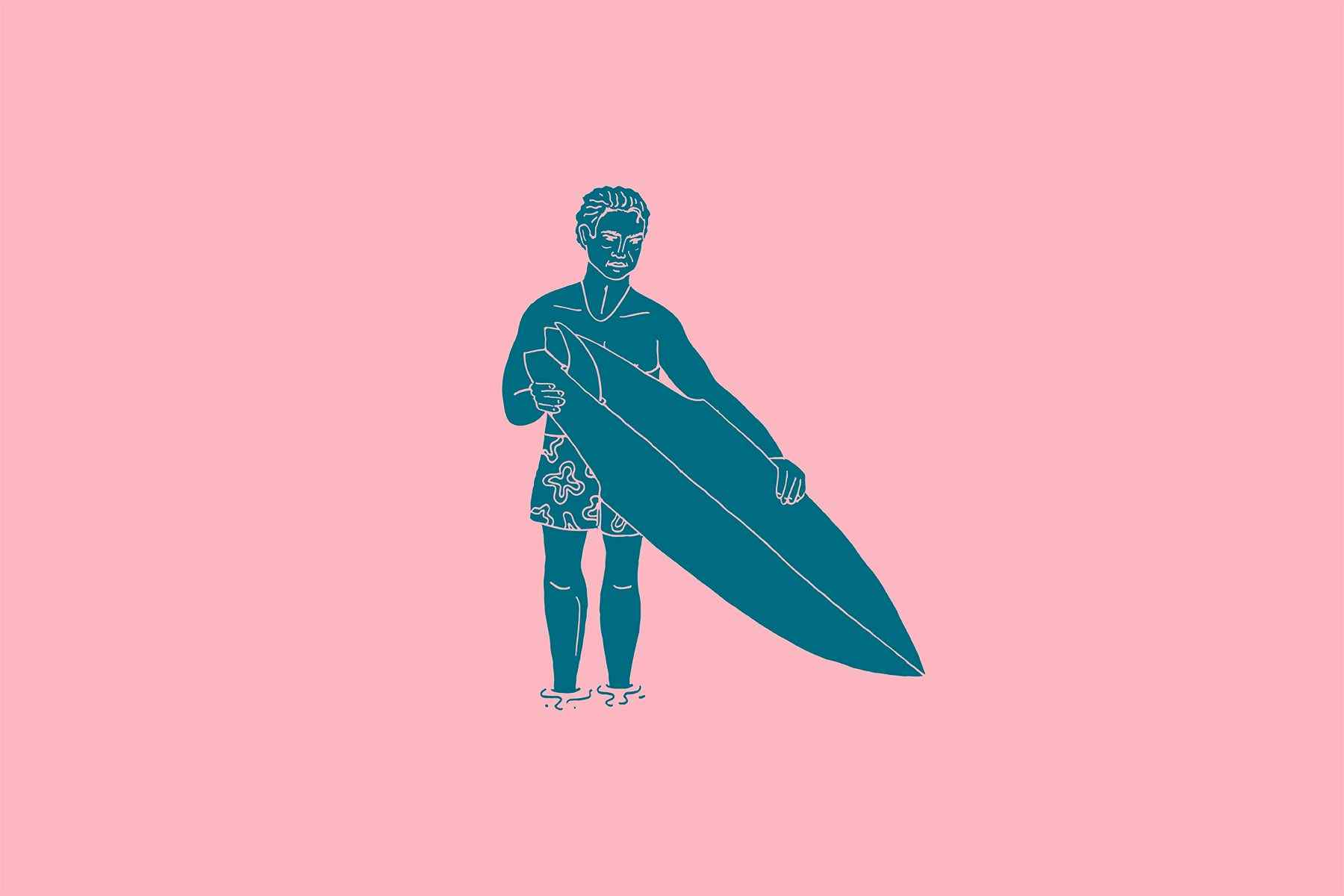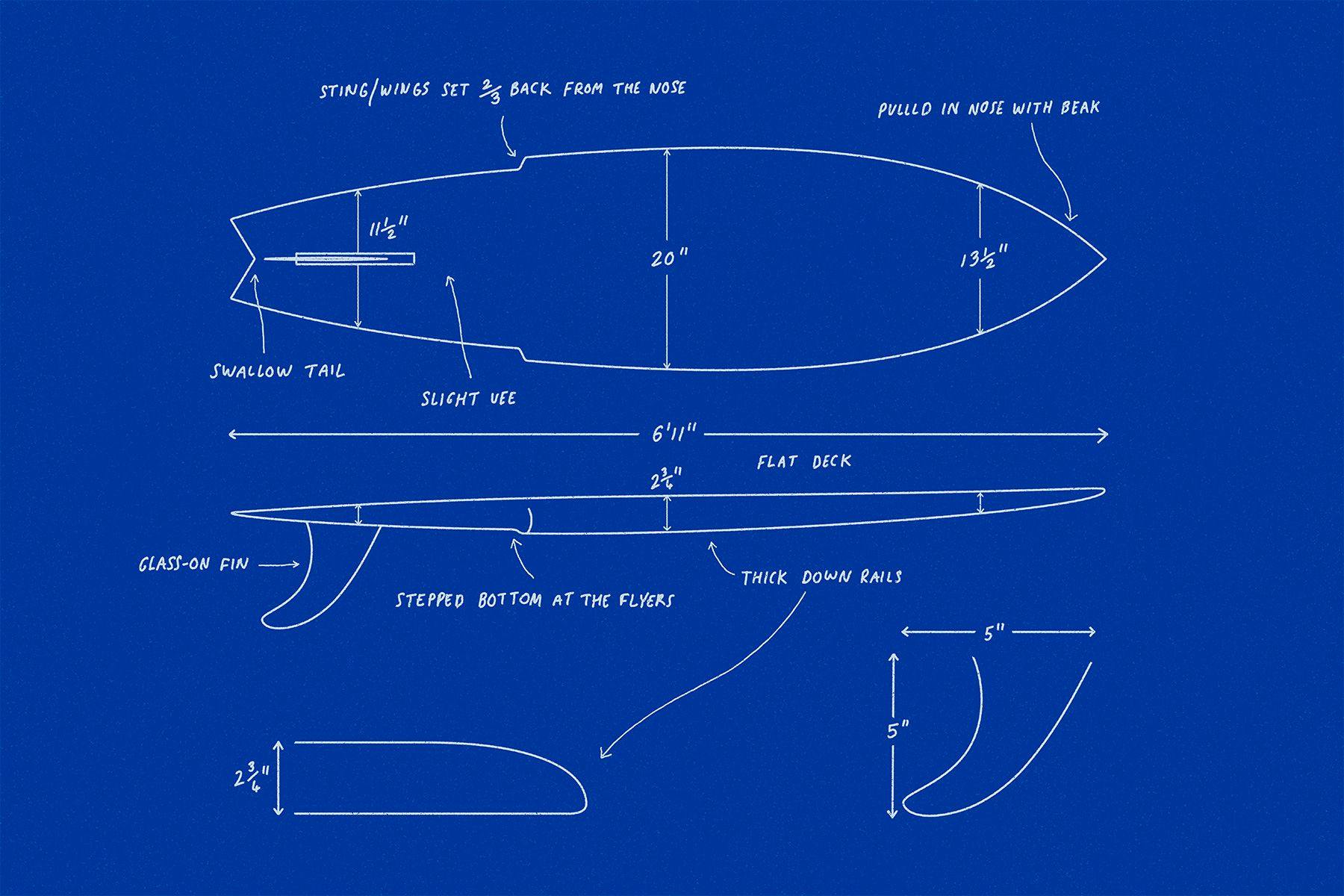SurfboardsThe History of Surfboard Design: Ben Aipa and The Sting

Branching off the high-performance surfing path that began in the 60s, Hawaiian Ben Aipa created the Sting model in 1974. Through its winged outline, influenced by the hull of hydroplane speedboats, the Sting (often also referred to as the Stinger once the design became popularised on the American mainland ) expanded on tried-and-tested fundamental components of the previous decade’s experimentation with mini-guns and fishes in order to supply surfers with the means to optimise performance, particularly in smaller waves. The result was a surfboard that turned quicker and rode faster than conventional models of the time. Aipa’s Sting was the first winged board of it’s kind, and the precursor to Mark Richards’ refined version of the twin-fin.
The Historical Context
While the mid-to-late 60s was a period of remarkable experimentation in surfboard design, the beginning of the 70s saw a slight change in focus. With a relative standstill in technological developments, the crystallisation of the Shortboard Revolution, and high-performance surfing as the new standard, surfers saw the opportunity to bring the sport to another level, seeing themselves less like craftsmen-cum-wave-riders and more like athletes with potential professional careers. This triggered a process of “professionalisation”, increasing the number and importance of competitions – which would later give birth to surfing’s first governing body, the International Professional Surfing (IPS). Commercial factors led to several major contests of the time being held in small-wave spots that could draw bigger crowds and better sponsors, but the standard boards of the day were all variations on the teardrop shaped, single-finned Mini-Guns of the Shortboard Revolution, that really came to life in waves of consequence. Surfers of taller and bulkier build in particular found their performances compromised in those smaller, weaker waves, which proved that there was still some room for design improvements and consequently enticed surfer-shapers to keep experimenting with board design.
Why Was This Development Necessary?
The Shortboard Revolution re-standardised the length of surfboards to around 7ft and wave riding to a more radical and vertical style of performance. At the same time, contests were being held in a wider variety of different venues with varying quality surf. That meant that surfers were attempting bolder manoeuvres in some very diverse conditions with boards that had been fine tuned for powerful waves. While lighter surfers could milk some performance from the conventional designs in smaller waves, those of taller and/or bulkier build, which was the case of Ben Aipa and Mark Richards, struggled to get their boards to perform well in less powerful conditions. When choosing a board with more volume, they gained floatation but lost manoeuvrability – and vice-versa. There was also the problem that, equipped with the standard single fin, the wider outlines required in small waves, would cause the fins to pop out of the water through turns. Although similar split-outline designs had been used in the past (namely by Dale Velzy) Ben Aipa’s Sting coupled just the right features to increase floatation and planing speed, improve manoeuvrability, and add bite to sharper turns.

Who Was Involved?
Multi-talented, determined, and stocky Ben Aipa was born in 1942, in Honolulu, Hawaii. Although an islander, Aipa was a swimmer, weightlifter, and footballer before he was a surfer. Yet, after a first contact with surfing in his early 20s, he developed his skills both in the sea and the shaping bay with astonishing speed, becoming one of Hawaii’s best competitors and high-performance boardmakers of the era. His first major feat as a competitor came in 1966, when he won the Hawaiian Inter-Island Championships and reached the finals of the Duke Kahanamoku Classic. As a boardmaker, Aipa made the board that Fred Hemmings won the World Championships of 1968 with and two years later founded his own brand, Aipa Surfboards. Despite being an avid competitor, Aipa’s most remarkable contribution to surfing came as a designer with the creation of the double-ended swallowtail and the Sting (popularised as the Stinger) model. Aipa had a saying: “ In order for surfing to change, surfboards need to change.” His innovations not only lured the likes of several Hawaiian top surfers, such as Larry Bertlemann, Buttons Kaluhiokalani, Mark Liddell, Dane Kealoha and later on, Mark Richards, to his shapes but also kickstarted Aipa’s surf coaching career, which came to influence names like Sunny Garcia and Andy and Bruce Irons.
Design Details
The Sting’s most prominent and relevant feature was its outline. Taking his cue from the outline of a hydroplane speedboat that he’d watched outperforming all other competitors at a boat race on Oahu in 1974, Aipa merged design components of the mini-gun and the swallowtail that he’d developed in 1971. He template his standard swallow tail shortboard, gave it a slightly wider forward section and then used his thumbnail to trace the template inside of the original outline for the rear third of the board, reducing the width of the tail by an inch on either side. He thus created a winged outline that had a wide nose and hip but a narrow, tapered tail. With that, the stinger addressed two major performance points at once: the wider front section had more surface area than conventional designs, thus improving floatation and planing speed, while the narrower rear section, coupled with Aipa’s swallowtail, allowed for sharper turns and a greater manoeuvrability. The effect of the wings was like moving the tail 1/3 up the board’s length, providing release and almost instantaneous pivot. Manoeuvrability was also assisted by placing a narrow-based single fin further forward, consequently shifting the board’s pivot point. Moreover, the abrupt bumps on the rail line worked like fins, “stinging” the face of the wave and adding bite to the board’s turning radius – a determinant in optimising the small-wave, high-performance surfing of the time. The story goes that when Larry Bertlemann paddled out at a spot called Lighthouse in Diamond Head to test the first prototype, Aipa was walking back up the hill to watch him and saw how Bertlemann was turning harder, sharper and faster than he’d ever seen before. He remarked aloud to himself “Man, Larry is stinging the waves!” This is how the design came to be called The Sting.
Specifications
Avg Minimum Avg Maximum Length 5’10” 7’4”
Width
Nose Midpoint 19 1/2” 21″ Tail Thickness 2 7/8” 3 1/4″ Volume
